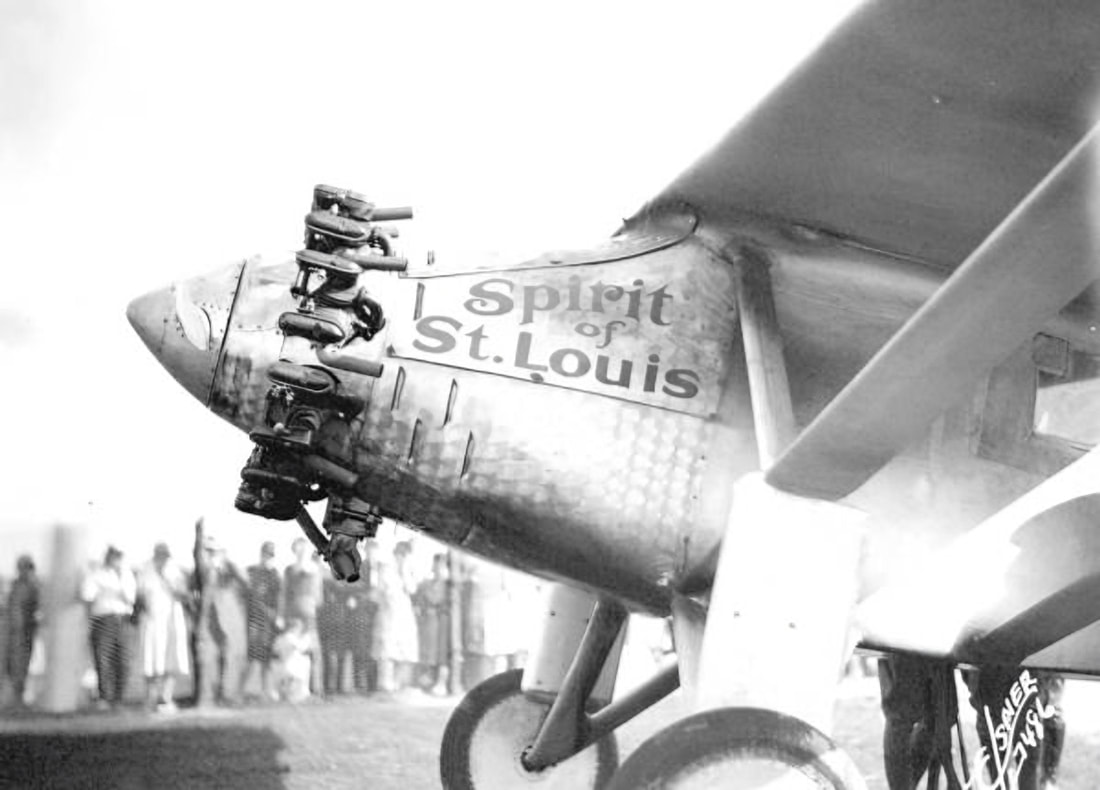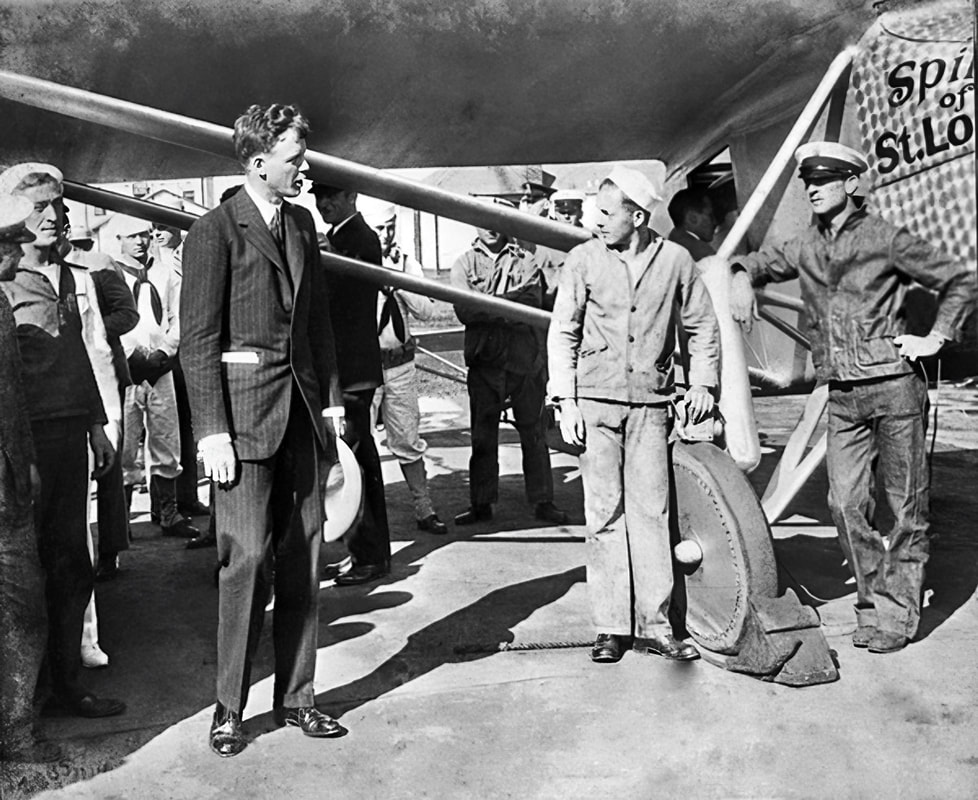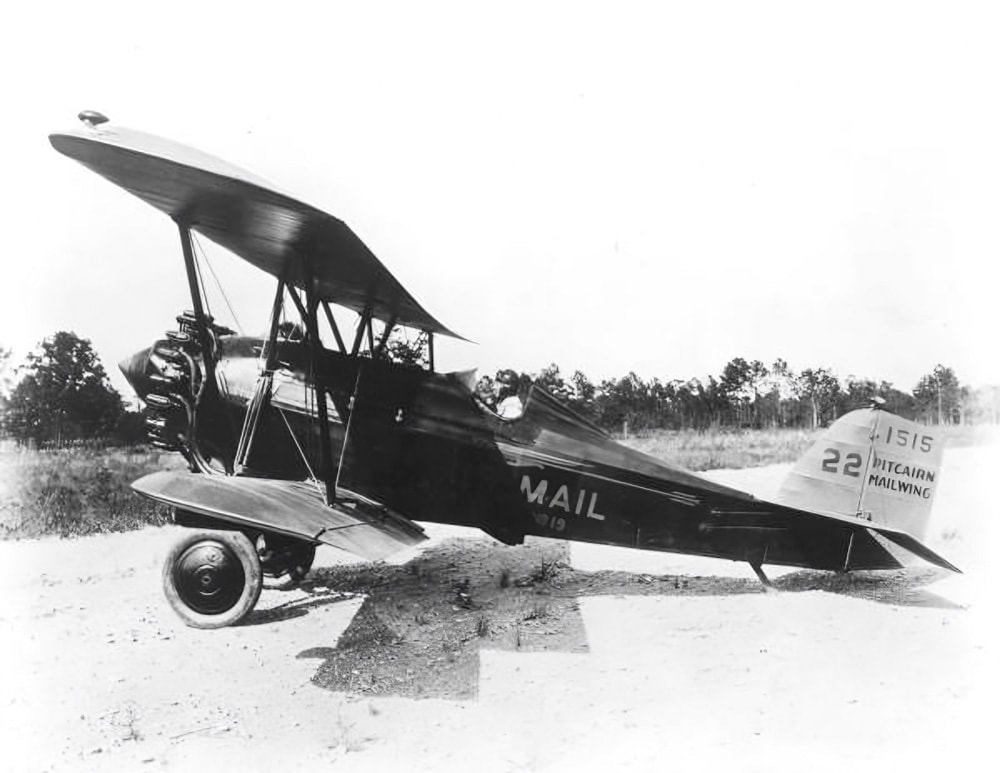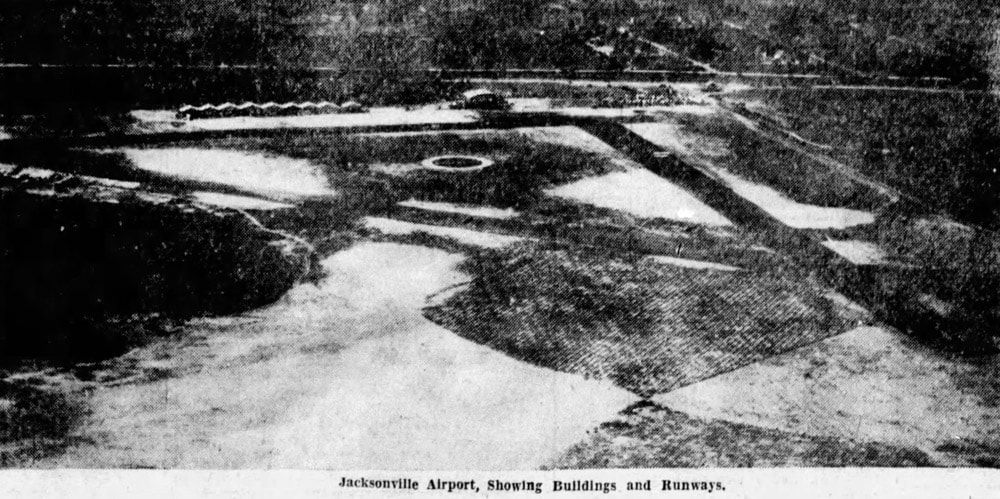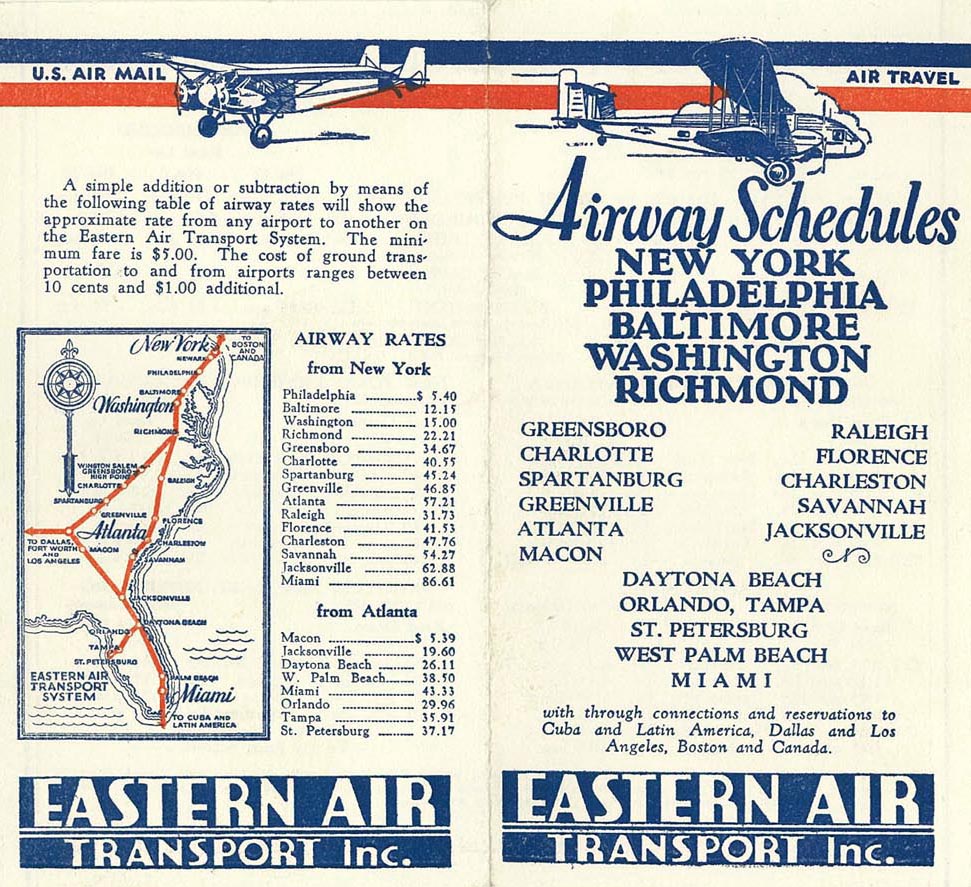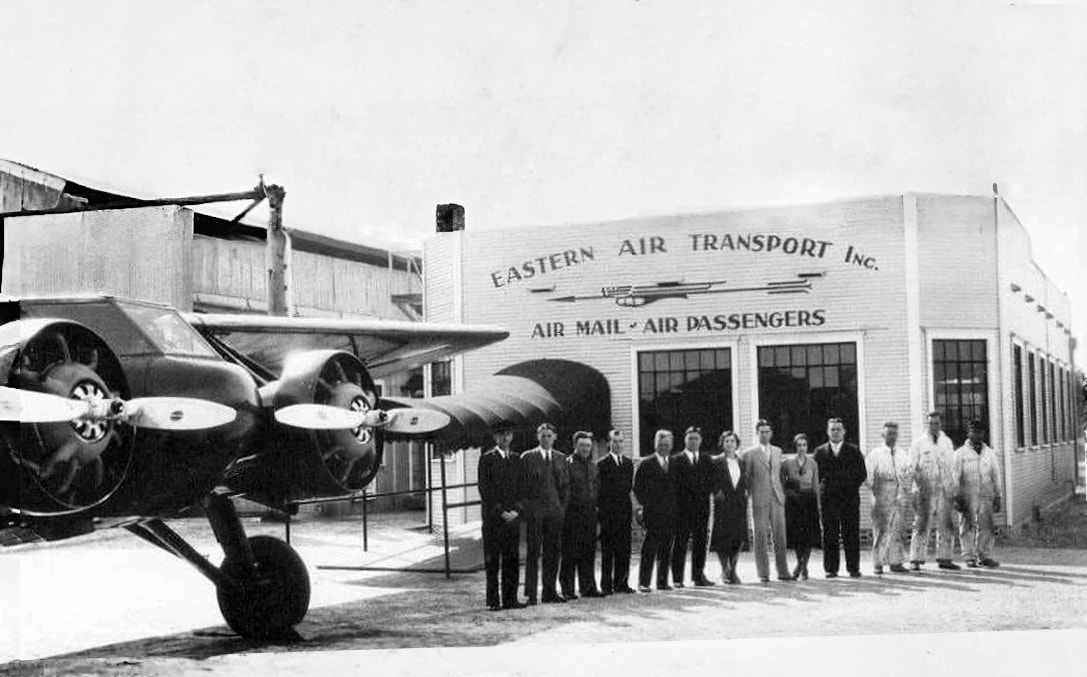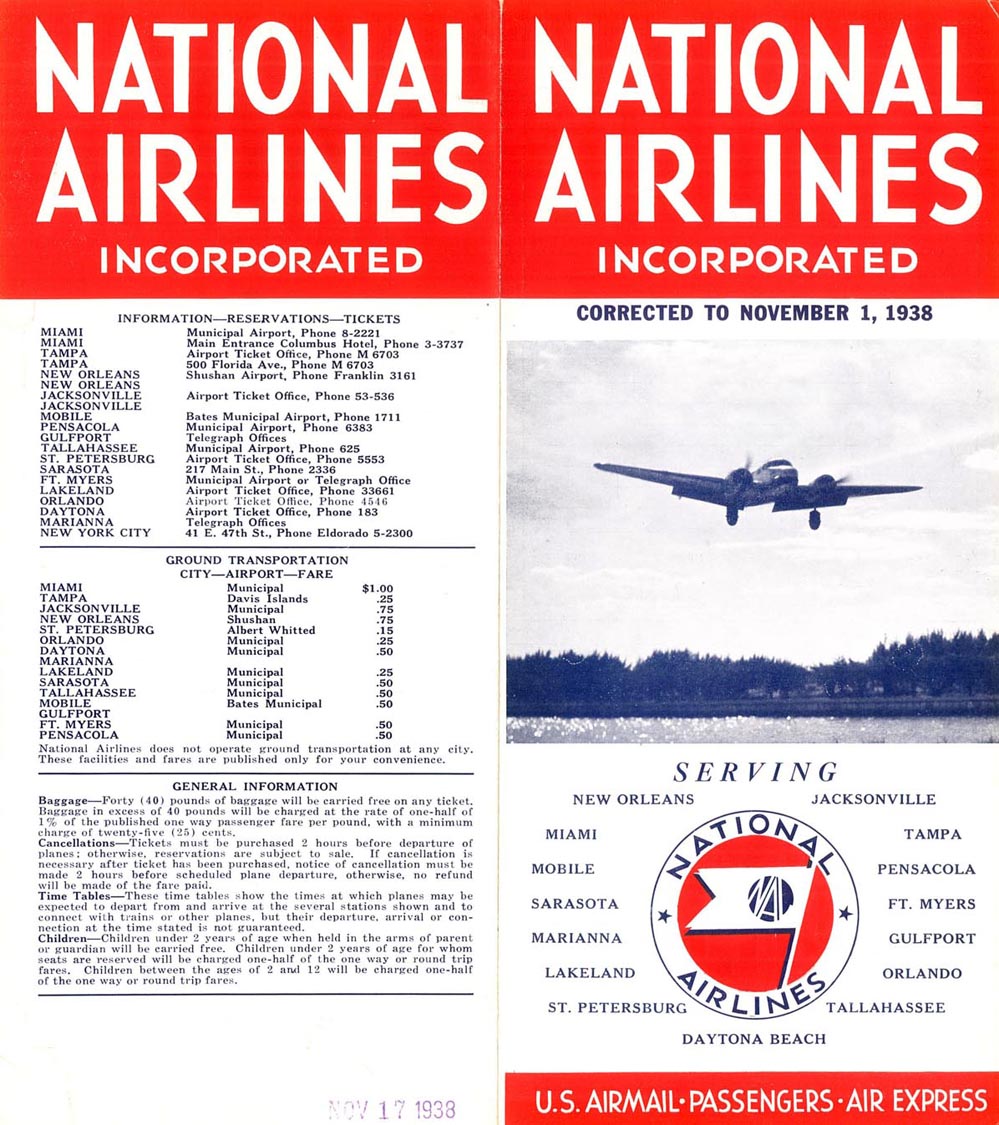HISTORY OF AIRLINE SERVICE AT JACKSONVILLE, FL
Part One: 1920s-1930s
Part 2 (1940s) / Part 3 (1950s) / Part 4 (1960s) / Part 5 (Imeson final years) / Part 6 (Imeson closing)
Airline service in Jacksonville began nearly a century ago, when Florida Airways inaugurated air mail flights to Miami on the morning of April 1, 1926. Famed flying ace Eddie Rickenbacker and Reed Chambers formed the airline on November 3, 1925 in hopes of taking advantage of the recently passed Contract Air Mail Act which awarded air mail routes to private operators. Florida Airways was awarded the CAM 10 air mail contract between Jacksonville and Miami via Tampa and Fort Myers on February 11, 1926 with a set start date of April 1. The airline assembled a small fleet of aircraft and hired the necessary personnel to begin service, but one major obstacle remained: a lack of suitable landing fields along the route.
Work began immediately on a new airport north of Jacksonville on the site of an old prison farm but the goal of building an airport in less than two months was obviously unrealistic. With the deadline approaching and time running out, Florida Airways set up shop at Paxon Field, a primitive landing strip just west of downtown. The poor condition of the field and the surrounding tall trees made the use of the airline's AT-2 aircraft impossible, so two small Travelair biplanes were purchased specifically for use on the Tampa - Jacksonville runs until the new airport was finished. Despite the many setbacks and complications, a Travelair christened "Miss Jacksonville" departed as planned on the morning of April 1st, 1926.
Work began immediately on a new airport north of Jacksonville on the site of an old prison farm but the goal of building an airport in less than two months was obviously unrealistic. With the deadline approaching and time running out, Florida Airways set up shop at Paxon Field, a primitive landing strip just west of downtown. The poor condition of the field and the surrounding tall trees made the use of the airline's AT-2 aircraft impossible, so two small Travelair biplanes were purchased specifically for use on the Tampa - Jacksonville runs until the new airport was finished. Despite the many setbacks and complications, a Travelair christened "Miss Jacksonville" departed as planned on the morning of April 1st, 1926.
Florida Airways' inaugurated Jacksonville's first airline passenger service along the JAX - Miami route on June 1, 1926. This timetable shows a single flight in each direction, six days a week. The line was extended to Atlanta on September 15 but after months of poor revenue, the airline shut down on December 31, 1926. From the collection of Tom Heitzman via Timetable Images.
This map from the August 16, 1927 issue of the Airway Bulletin shows Jacksonville's first commercial airport Paxon Field to the west and Jacksonville Airport, still under construction, north of town.
From the same publication, Paxon Field is shown as a rectangular field 2600 feet by 600 feet with a single building on the southeast corner of the field.
The December 1, 1926 issue of the Aeronautical Bulletin included this diagram of Jacksonville Airport and offered this information: "Municipal Air Mail Field under construction; will be ready November 1, 1926. Size, north and south, 2,800 feet; east and west, 3,000 feet. Runways extend through surrounding pine trees. Surface, good hard-packed sand. Low depression with swamp, middle corner of L. High oak trees, south end; pine trees of medium size surrounding entire field and territory. Rain in June, July, August, and September. Every day a flying day. This field when completed will accommodate any type of plane."
As mentioned earlier, the original Jacksonville Airport was built on the site of a prison farm. Here's a 1914 photo of some of the barns on the property. The farm was established in April 1912 and was located seven miles north of the city on 640 acres. This would eventually become Imeson Airport. State Archives of Florida.
National hero Charles Lindbergh visited the airport (still under construction) and was greeted by a crowd of more than 8,000 cheering onlookers on October 10, 1927 despite a torrential downpour. State Archives of Florida.
The following day another large crowd gathered to catch a glimpse of Lindbergh as he departed for Atlanta. October 11, 1927. State Archives of Florida.
Lindbergh's Spirit of St. Louis departs Jacksonville for the trip to Atlanta. October 11, 1927 State Archives of Florida.
Pitcairn Aviation, the predecessor to Eastern Air Lines, took over Florida Airways former mail route between Atlanta, Jacksonville and Miami on December 1, 1928 using Pitcairn Mailwing aircraft. The service was a great success. Photo from the State Archives of Florida.
After more than two and a half years of construction, Jacksonville's municipal airport officially opened on December 9 ,1928.
This aerial view of Jacksonville Airport facing west appeared in the October 5, 1929 edition of the Orlando Evening Star and shows three runways in a triangular configuration with airport buildings lining the west side of the field.
1930 photo of Jacksonville Municipal Airport facing southeast. The airport was 175 acres at the time. Photo from a Chamber of Commerce publication found in the University of Florida digital collections.
Pitcairn Aviation changed its name to Eastern Air Transport in January 1930. This timetable dated April 1, 1931 shows three daily arrivals and departures at Jacksonville on routes to Atlanta, Miami and New York. Björn Larsson via Timetable Images.
Early 1930s view of Eastern Air Transport employees and a Curtis Kingbird in front of the new Jacksonville terminal building. The 6-passenger Kingbirds flew with Eastern from 1930 to 1934.
National Airlines began service between Jacksonville, New Orleans and St. Petersburg on November 1, 1938 using Lockheed Model 10 Electras. Björn Larsson via Timetable Images.
This schedule shows one daily flight in each direction along the multi-stop New Orleans - Jacksonville - St. Petersburg route. National moved their headquarters from St. Petersburg to Jacksonville in 1940. They would later relocate to Miami.
These are from contact sheets of photos taken by Hans Groenhoff at Jacksonville in 1939, found in the Smithsonian National Air and Space Museum archives. I'm not sure what event is shown here, but there are some good views of the early airport structures and a couple of aerial shots showing the buildings on the west side of the field







